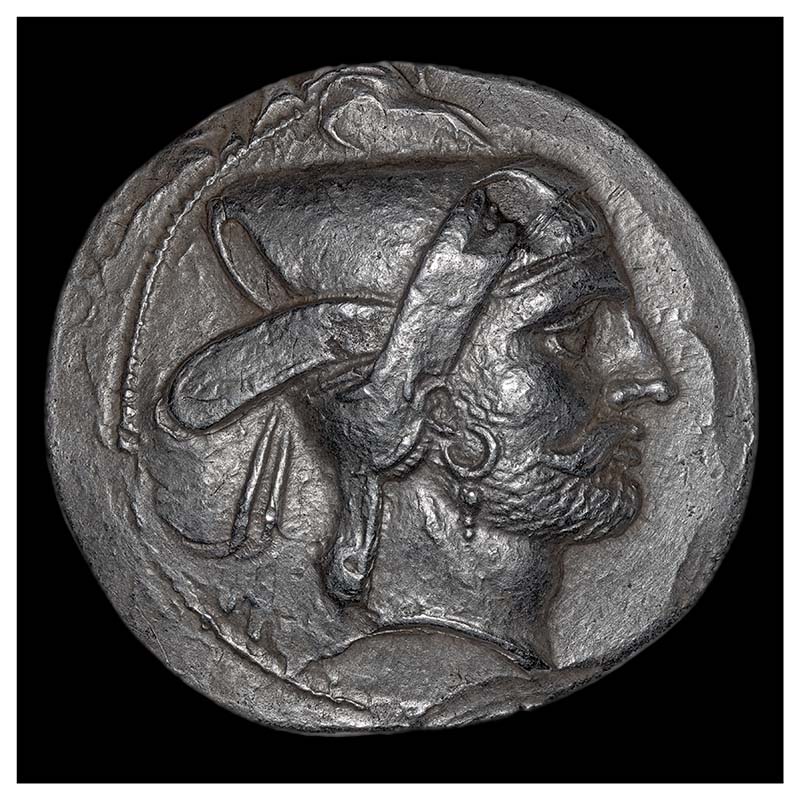
| Persis, Bagadat (Baydad) |
|---|
| Click here popup a larger image, click coin for reverse. |
| AR tetradrachm 17.0545 g, 29.5 mm |
| 3rd century BC, Persepolis or Pasargadae, see Wiesehöfer for alternative later dating. |
|
1. Hill, George Francis. 1922. Catalogue of the Greek Coins of Arabia Mesopotamia and Persia. Page 195 #1
and Plate XXVIII #7. London: British Museum. 2. Alram, Michael. 1986. Iranisches Personennamenbuch Band IV: Nomina Propria Iranica in Nvmmis. Page 165 #511 and Plate 17 #511. Vienna: Verlag der Österreichischen Akademie der Wissenschaften. 3. Newell, Edward T. 1927. The Coinages of Demetrius Poliorcetes. This coin struck over that described on Page 97 #90 LXXXIII and Plate VIII #11 (var). London: Oxford University Press. 4. Curtis, Vesta Sarkhosh. 2007. The Iranian Revival in the Parthian Period. In The Age of the Parthians, edited by Curtis, Vesta Sarkosh and Sarah Stewart. Page 18, figure 21. London and New York: I.B. Tauris & Co Ltd. Reprint 2010. 5. Wiesehöfer, Josef. 2007. Fars under Seleucid and Parthian Rule. Ibid. Alternative dating, page 40; Seleucid scepter, page 43 (b) |
| Obverse |
| Bagadat, head right, with short beard, mustache, and earring, wearing kyrbasia with flaps tied behind. Overstruck on a Demetrius Poliorketes tetradrachm, Pella mint, see Newell for underlying coin. |
| Reverse |
| Bagadat enthroned left, holding Seleucid sceptre and lotus blossom, tasseled standard to left. He is wearing a long over-garment with its sleeves hanging at his sides. Hill, pages clxiv-clxvii, describes the Aramaic inscription and discusses translations, "Bagadat Frataraka (fire kindler) of the Gods". |